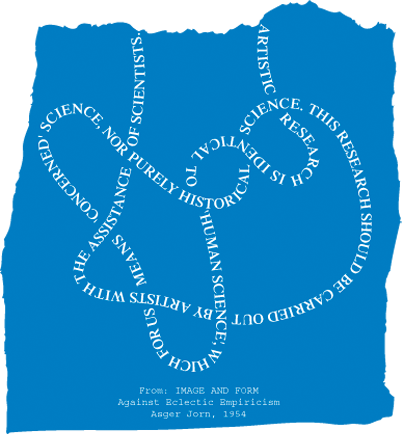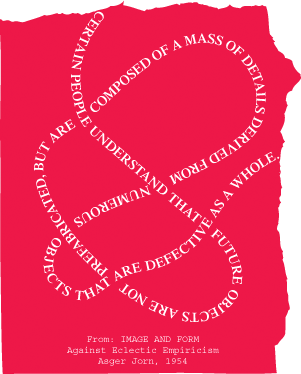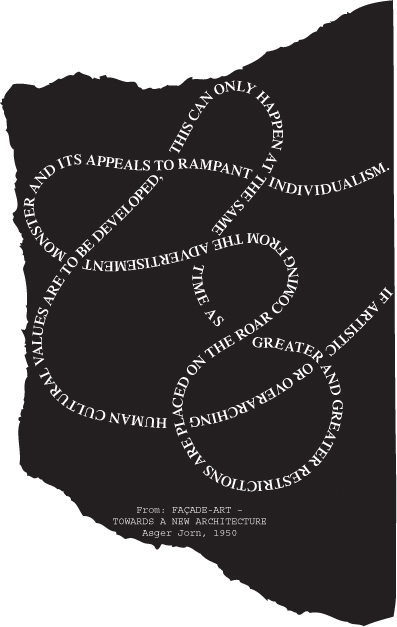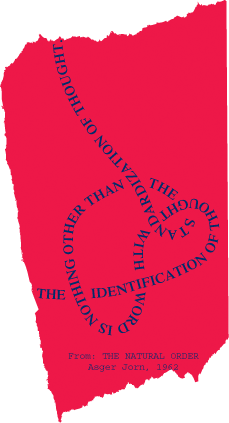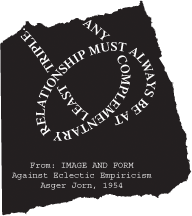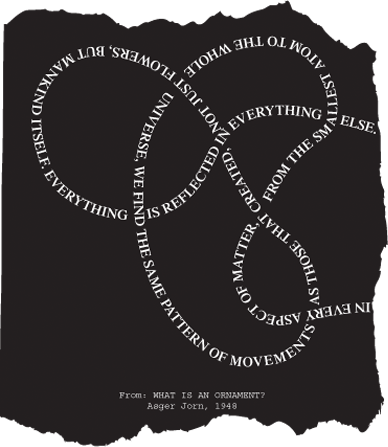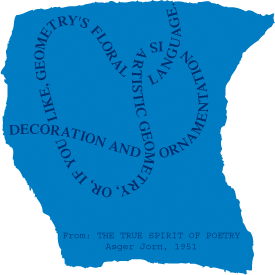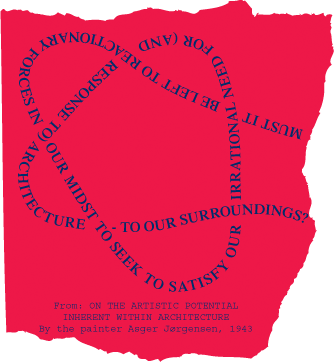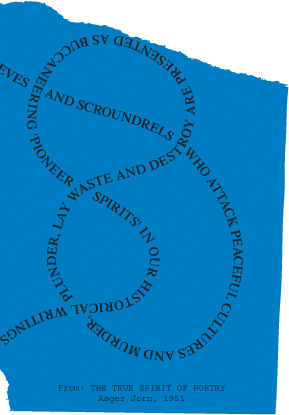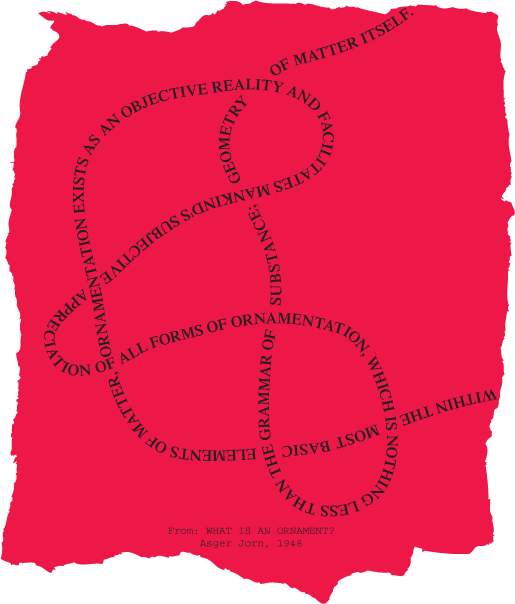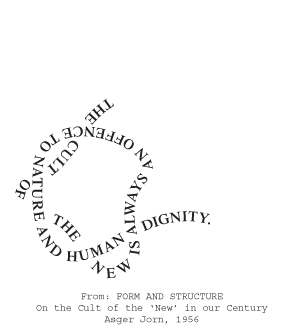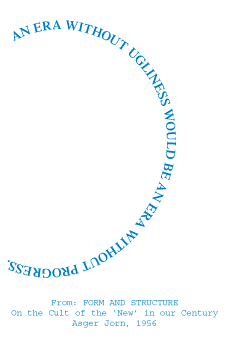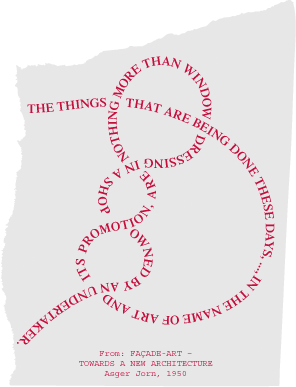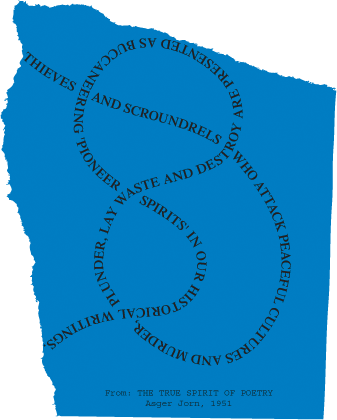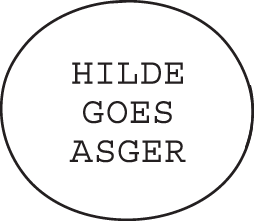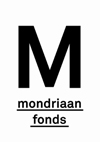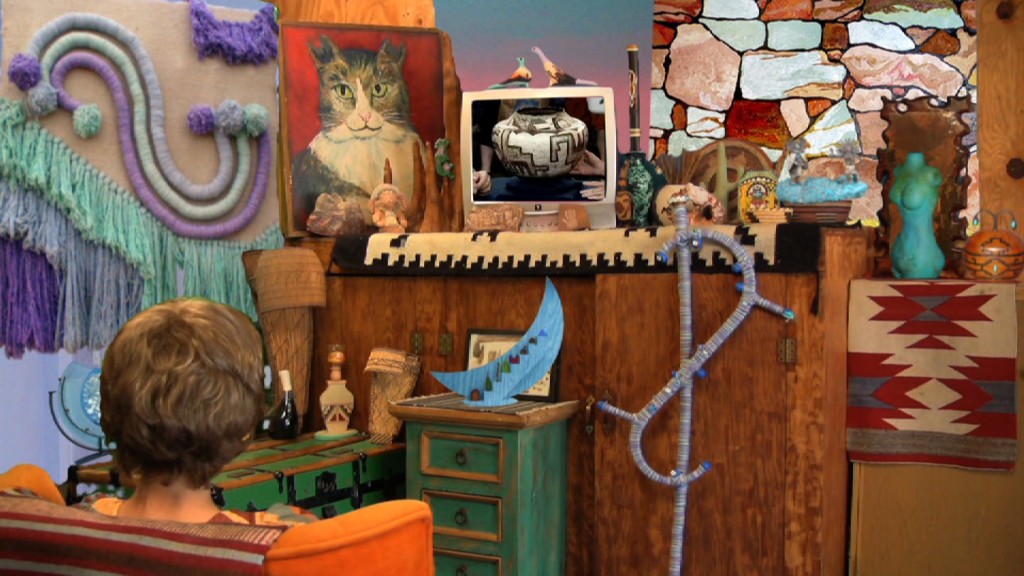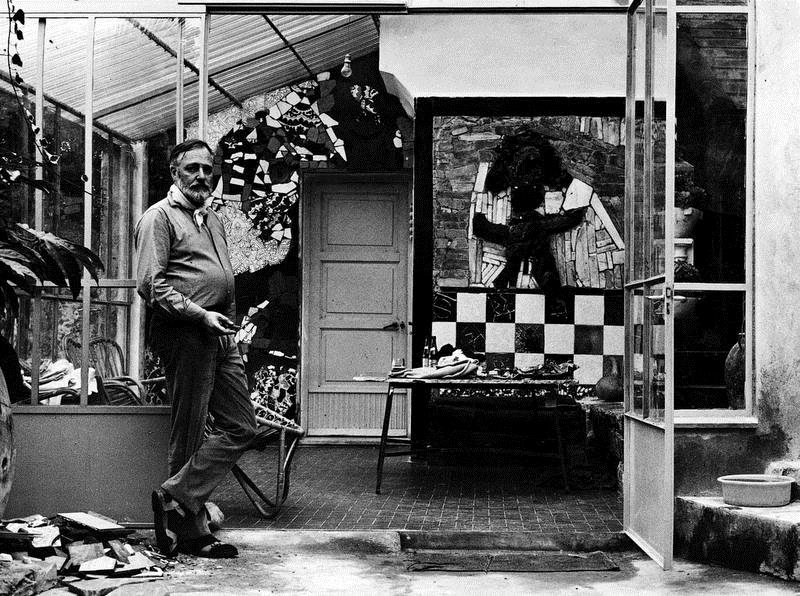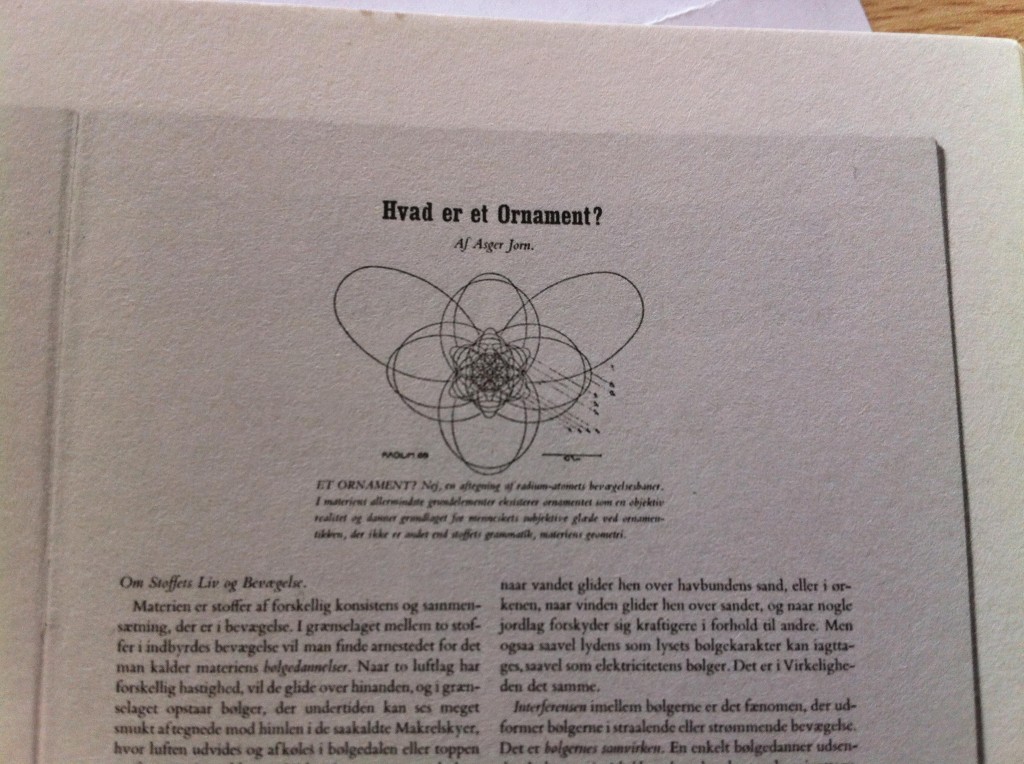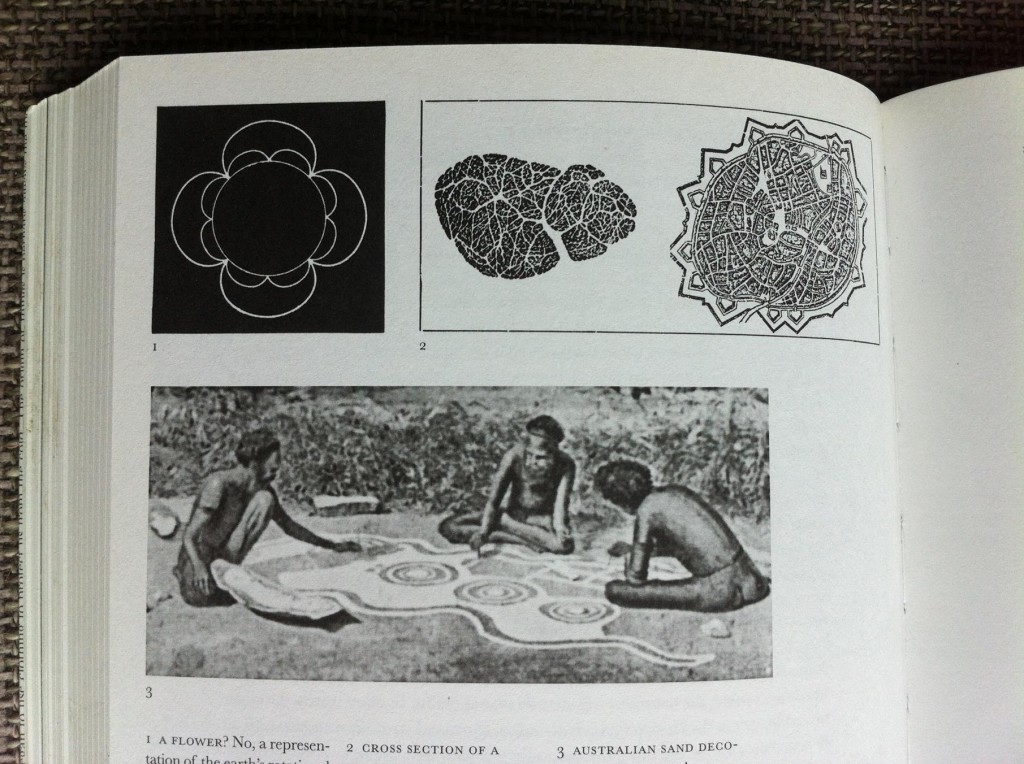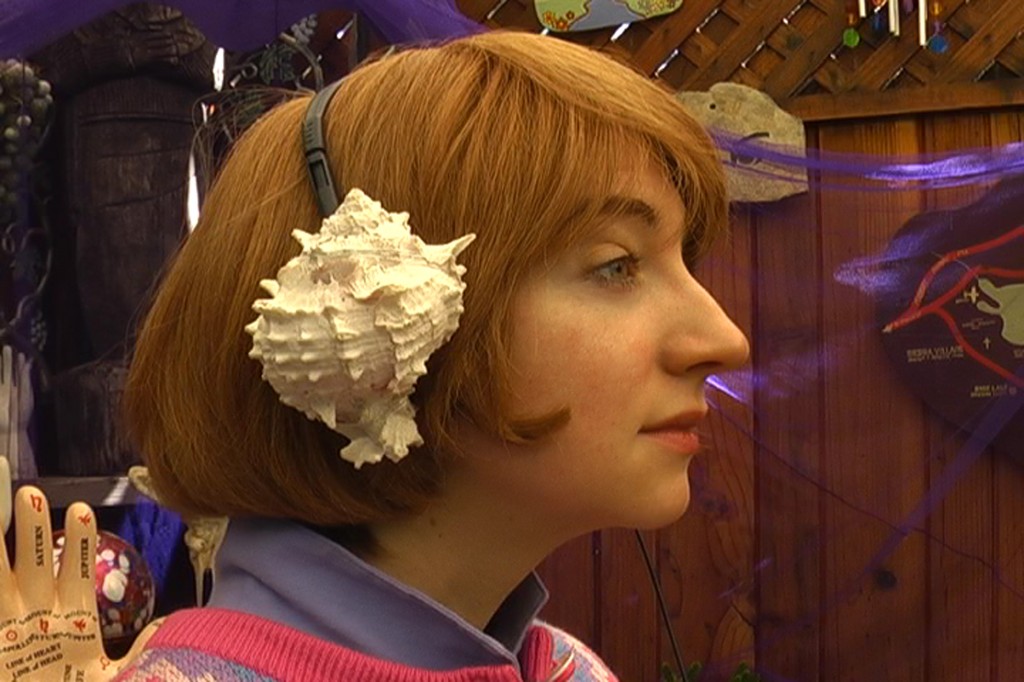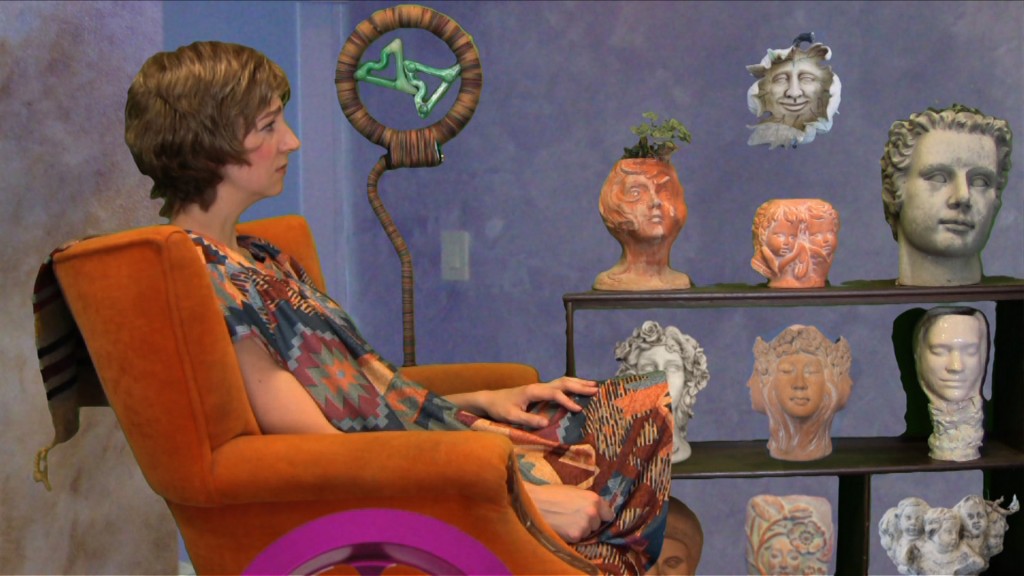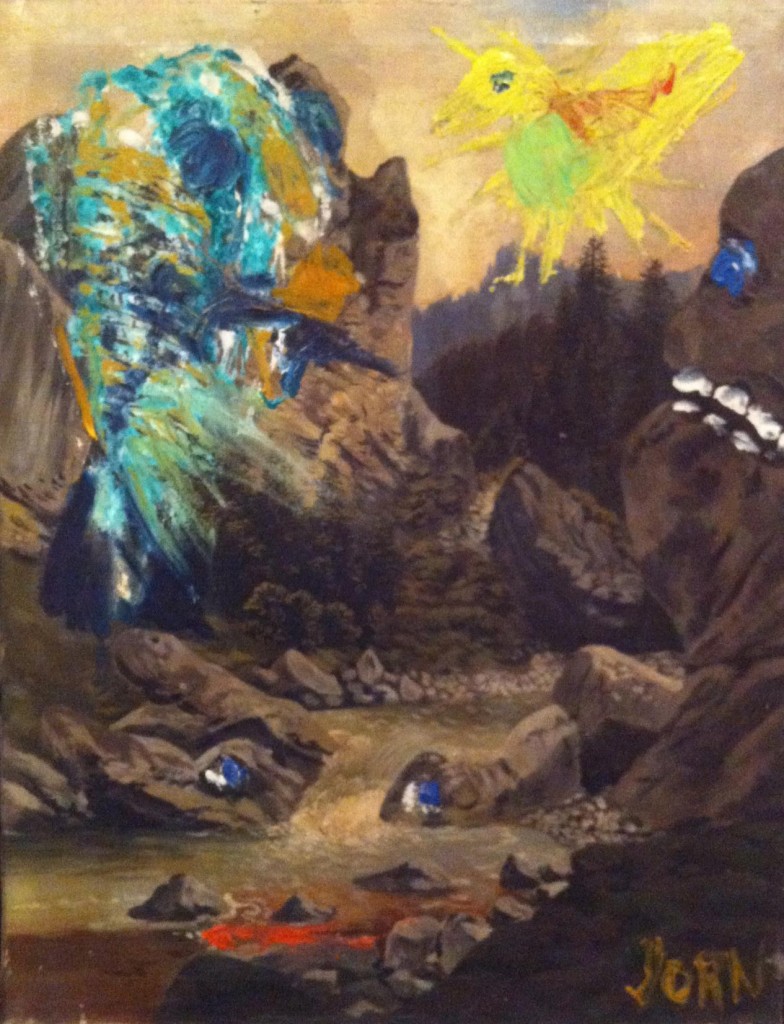THE GRAMMAR OF SUBSTANCE (I)
Within the framework of my research into Asger Jorn´s writing and thinking I organize public sessions with special guests at a variety of venues. The guest´s practice, knowledge, insights, or responses are informative to my research, or steer the direction I take on a particular topic. The sessions also often respond to the context of the hosting institution, or to a specific request. Making the sessions public is a way to share and enter into a dialogue with the audiences.
‘The Grammar of Substance’ was a talk by Canadian artist Shannon Bool (lives and works in Berlin) and myself in the framework of the exhibition ‘Shana Moulton – episodes from Whispering Pines’ at Nieuwe Vide, Haarlem. The talk took place on Sunday 16 March 2014.
Shana Moulton is an American performance and video artist who lives and works in New York. Her work is very adequately described by Marco Antonini: “Shana Moulton’s videos and performances are in many respects the product of her own fears and anxieties. Surrounded by hysterically colourful and studiedly kitsch scenarios, her filmic alter ego, Cynthia, is obsessed with her health and well-being. In Shana/Cynthia’s hands, inoffensive and awkward medical and orthopedic devices are transformed into surrealistic machines and gateways to parallel realities that are directly linked to her perceived psychological and physical illnesses. Her adventures mirror the insecurities of whole generations while also exploiting stylistic forms and tropes excavated from the recent history of mass-mediated culture.” http://www.museomagazine.com/SHANA-MOULTON In my talk I connected Asger Jorn’s universal ornamental language, or his ideas on ornamentation, to Moulton’s the symbolic and cosmological references. Shannon Bool’s contribution is discussed on this blog in the post ‘The Grammar of Substance II’.
What is an ornament?
The irrational, magic, the attribution of value and value creation, media critique and ornament and decoration are all aspects in Moulton’s work, and some of Jorn’s favourite subjects, so I decided to discuss Moulton’s work through the lens of Asger Jorn’s text ‘What is an ornament?’ from 1948. Throughout the text run a couple of recurring concerns in Jorn’s (earlier) writings: a critique on functionalist architecture, a critique on capitalism and prefabrication, his belief in the interconnectness between things (which leads to the necessity for what he called ‘a living art’), and his firm belief in the capacity of the artist to create the best possible environment for mankind.
The first paragraph of ‘What is an ornament?’ is called ‘On the life and movement occurring in all substances’. It starts out stating that “Matter consists of substances in motion that have different composition values and consistencies. At the interface between two substances engaged in mutual motion, we find the catalyst for that which we describe as the wave formation of matter.” Jorn importantly adds that “There is a cohesion that exists within the reaction forms inherent in different substances and this includes that of mankind.”(Please note that in this blog entry all English citations from ‘What is an ornament?’ come from Fraternité Avant Tout– Asger Jorn’s writings on art and architecture, 1938-1958, ed. Ruth Baumeister, 010 Publishers, Rotterdam, 2011).
Furthermore, Jorn addresses various aspects of the ornament:
The first point Jorn makes is that ornamentation is the geometry of life (of matter) itself. He then explains the difference between a naturalist and a materialist way of working, eventually stating that for the material artist, nothing (not even thought processes) can be immaterial in the deepest sense of this word. I will go into these issues and their implications later on. He also discusses what he calls “the tragic history of the ornament in art”, asserting that there are two different interpretations of the ornament in art:
- The ornament as monumental decoration which seeks to form a finite whole, and becomes static ornamentation. Examples are: classicist Renaissance art, and various forms of neo classicism.
- The ornament as spontaneous arabesque, which manifests itself as a set of elements within a greater whole. This is ‘moving’ and hence dynamic ornamentation. It is about organic cohesion. To be found in the art forms of all primitive people, art of the Orient, prehistoric until Romanesque monumentalism set in. From that moment on there has been a constant reappearance and disappearance of dynamic ornamentation (Baroque, Rococo, Empire, Art Nouveau. (Jorn: Static forms have a tendency to become dynamic because dynamic art is the natural way of things)
Jorn then points at the fact that art itself (in the western world) became split into two categories – the higher, or classical art and folk/banal or spontaneous art. He connects the appearance and disappearance of static and dynamic ornamentation to economic and political changes. This basic point, that the way we deal with ornamentation is influenced by economic and political factors seems to be wholeheartedly confirmed by various contemporary scholars, including Professor Jörg H. Gleiter, who is specialized in the history of the ornament. In ‘Ornament: The Battleground of Theory’ he writes: “Every time the question of ornament arises, it indicates a fundamental structural change which is therefore seen as a crisis and a major upheaval in culture. It is precisely in times of radical cultural change that the question of ornament resurfaces, such as for example at the beginning the 20th century with the transition from production by hand to production by machine, or in the second half of the 20th century with the transition to the structural and post-structural processes of postmodernism. Today too, on the cusp of the change from the mechanical to the digital age, the talk is of the “revival of ornament”. Gleiter’s text can be downloaded here: ”https://www.academia.edu/357179/Ornament_The_Battleground_of_Theory
I would like to return now to the first point that Jorn makes in his text: ornamentation is the geometry of life (of matter) itself, it is “the grammar of substance”. The examination and negotiation of the relation between the materiality of the art work and its discursive meanings, between matter and mind in general, were a central concern throughout Jorn’s practice. The first paragraph of Jorn’s ‘What is an ornament?’ starts out stating that “Matter consists of substances in motion that have different composition values and consistencies. At the interface between two substances engaged in mutual motion, we find the catalyst for that which we describe as the wave formation of matter.” Think of the patterns that the wind creates in the clouds, or in the sand, or the way that sound and light interact etc. Jorn importantly adds that “this cohesion that exists within the reaction forms inherent in different substances, includes that of mankind.”
Jorn illustrates his ideas with several images, including the one below for which he provides a long caption saying: “An ornament? No, a drawing of the orbital paths of a radium atom. Within the most basic elements of matter, ornamentation exists as an objective reality and facilitates mankind’s subjective appreciation of all forms of ornamentation, which is nothing less than the grammar of substance; the geometry of life itself.”
The examination and negotiation of the relation between the materiality of the art work and its discursive meanings, between matter and mind in general, were a central concern throughout Jorn’s practice. The first paragraph of Jorn’s ‘What is an ornament?’ starts out stating that “Matter consists of substances in motion that have different composition values and consistencies. At the interface between two substances engaged in mutual motion, we find the catalyst for that which we describe as the wave formation of matter.” Think of the patterns that the wind creates in the clouds, or in the sand, or the way that sound and light interact etc. Jorn importantly adds that ‘this cohesion that exists within the reaction forms inherent in different substances, includes that of mankind.’
On another page Jorn combines a representation of the earth’s rotational curves, a cross section of the human muscle, the map of a Mediaeval town and ‘Australian sand decoration’.
His caption with the first image is:“A Flower? No, a representation of the earth’s rotational curves within its phases of movement. In every aspect of matter from the smallest atom to the whole universe, we find the same pattern of movements as those created, not just flowers but mankind itself. Everything is reflected within everything else.”
Jorn’s remarks about the interconnectedness of things and humans, of matter in general, about how “everything is reflected in everything else” made me think of some of the images from Shana Moulton’s ‘Whispering Pines 4′, where her alter ego Cynthia goes to see a spiritual healer for her hands and gets sound medication.
Her head shells produce a warm male voice and while listening I caught phrases such as “my true and dynamic nature” , “perpetually transcending” “I’m intimately connected to everything” “”I am more than my physical body. I am limitless.” The cure seems to work, and we soon see Cynthia in various scenarios that literally visualize the words of the healing voice:
The Golden Spiral (which Moulton refers to in the video) represents two well-known shapes in sacred geometry: the golden mean or golden ratio (phi) spiral and the Fibonacci spiral. The unique thing about Phi is that it seems to be a geometrical blueprint for life itself and can be found incorporated in all known organic structures; from the bone structure of human beings to the seed pattern of a sunflower. (think again of Jorn: everything is reflected in everything else)
Materialisms
Let us for now return to Jorn’s theory of materiality, which is inspired by thinkers such as Karl Marx, Susanne Langer, Gaston Bachelard, and the physicist Niels Bohr – all of whom emphasized – in different ways – the role of physical matter in human thinking. In ´What is an ornament?´ Jorn states (as always, from the perspective of artistic practice) that “the materialist acknowledges that as a human being he is part of the materials and substances, can not be separated from nature.” For the materialist artist, Jorn says, human thought processes are instigated by the substances themselves, and are synonymous with the reaction form which these substances have, because thought (which in itself is immaterial in nature) cannot avoid the natural laws pertaining to matter. For the material artist, nothing (not even thought processes) can be immaterial in the deepest sense of this word.
I would like to relate these thoughts to the interaction between ‘Whispering Pines Cynthia’, and the objects from the health industry, the overlooked marginalia, and the poor thrift store objects that she surrounds herself with.
In the majority of the ‘Whispering Pines’ works, to Cynthia’s surprise many of the objects turn out to possess totemic power, agency lies in the objects, and their properties and associations acquire the power to shape the narrative. And even though the results are never what Cynthia or the viewer might expect, the objects’ magic sometimes even turn out to possess healing powers.
To Asger Jorn, and other members of the international Cobra group (1948-1951) which he helped establish, the idea to look at the world and depict it through a child’s perspective as it were, was of great importance. In the case of Jorn it was a decision informed by a desire for (social) change. I wondered in what way this also could apply to Shana Moulton. In the light of this it was interesting to read that in one online interview, Shana said her tutors at De Ateliers in Amsterdam were very critical of her work, and asked her if she was trying to make children’s television. Perhaps they were referring to Shana’s use of the idea of totemic power in objects, to her depicting a world of animate things rather than passive objects?
Contemporary philosopher Jane Bennett however, in her publication “Vibrant Matter – a political ecology of things”, actually tries to actively remind us of the capacity we had as a child to think of things animate. Bennett stresses the urgency to rethink “the idea of matter as passive stuff, as raw, brute, or inert”, and claims that it is time “to acknowledge that the world isn’t divided into dull matter (it, things) and vibrant life (us, beings). The quarantines of matter and life encourage us to ignore the vitality of matter and the lively powers of material formations, such as the way omega-3 fatty acids can alter human moods or the way our trash is not “away” in landfills but generating lively streams of chemicals and volatile winds of methane as we speak.” She argues that politics needs to be ‘ecological’, not in the classical sense of that term (i.e. focused on stable interdependencies between species) but in a more ‘vitalist’ sense that de-privileges humans. “By ‘vitality’”, she explains she means, “the capacity of things – edibles, commodities, storms, metals – not only to impede or block the will and designs of humans, but also to act as quasi-agents or forces with trajectories, propensities, or tendencies of their own.”
It is exactly this “vitality of matter” that Shana Moulton is emphasizing in an artistic and humorous way in her work, and which also seems of crucial importance in Jorn’s words, and Jorn’s works – both in terms of subject, and in terms of dealing with the material.
Based on ‘What is an ornament?’ and other texts by Jorn, I would conclude that according to him, the material world cannot be seen as passive, pre-shaped objects waiting for active subjects to observe and describe. It has its own agency and is constituted partly by its own force and partly by the way we perceive it.
Holism/New Age
I find it important to stress that with the parallels that I draw between Jorn and Shana Moulton’s work (who is obviously flirting with New Age) I have no intention to communicate that Jorn’s notions on interconnectedness have anything to do with holism. Philosopher Tim Morton critiques holism for “being ironically opposed to a truly profound ecological view”. He says: “The reason is simple: when you start to think about how according to holism the whole is always greater than the sum of its parts. This means that at some level there is already fragmentation. It also means that the parts are ultimately replaceable. This gives rise to all kinds of ethical consequences, for instance the idea that it doesn’t matter much to Planet Earth if humans become extinct, or even the idea that humans are a kind of virus—a whole could have faulty components that might need to be cleansed or replaced.” http://philosophyinatimeoferror.com/2010/05/10/tim-morton-the-interview/Morton’s critique explains why I felt a great need to come to terms with Shana’s tongue-in-cheek flirtations with New Age, during the preparations for the talk at Nieuwe Vide, as I have no intentions to create the impression of Jorn as ‘New Age avant la lettre’!.
However, New Age takes a special place in Californian culture. To refer to a quote that Shana Moulton send me from the publication The Alchemy of Trash by Erik Davis: “(…) spirituality, for us (Californians) anyway, takes place in the midst of the market and its commodified fantasies. This feedback loop is especially true in California, where esoteric spirituality has long been a part of a feverish and mercantile popular culture rife with trash. What religious seeking and California culture share most essentially is an investment in fantasy — fantasy not simply as “illusion,” but as the forms that fuse imagination and desire. As both ironic and populist fans of low-brow culture can attest, the ferocity of fantasy can lend a delirious dreamlike power to corny things like UFO cults and commercial entertainments like B-movies or comic books.”
It is in this culture that Shana’s work needs to be contextualized, in relation to which, as she also explains herself in our conversations “her goal has been to ride some line between absurdity and sincerity.” I would conclude that – the core question apparently being whether the whole is a sum of parts, or an undividable whole – Shana eventually seems to undermine the ‘holistic’ perspective of New Age. As Cynthia always seems surprised about the ‘totemic’ power of the objects, doesn’t seem to have any control over the totemic actions taking place, the ‘vibrancy’ of the objects, to speak with Jane Bennett, seems intrinsic, and not added to the existing object. This is a crucial thought for Bennett, which indicates that the whole is not the sum of parts, but that everything is already there.
Also, Shana’s aesthetics flirt with New Age, but her very rudimentary video technique, quick solutions and spontaneous-looking editing process, undermine and contrast with the New Age ‘all-is-beautiful and harmonic aesthetics’ at the same time. Here, we see no harmonious synthesis, but a disjunctive one, that makes it impossible to complete immerse in the spirit of New Age. Let me conclude by observing that Asger Jorn’s attitude is probably best characterized as ironic, humorous, playful, and self-contradictory and that luckily, Shana Moulton’s ornamented universe seems to have come into existence with a similar attitude.
